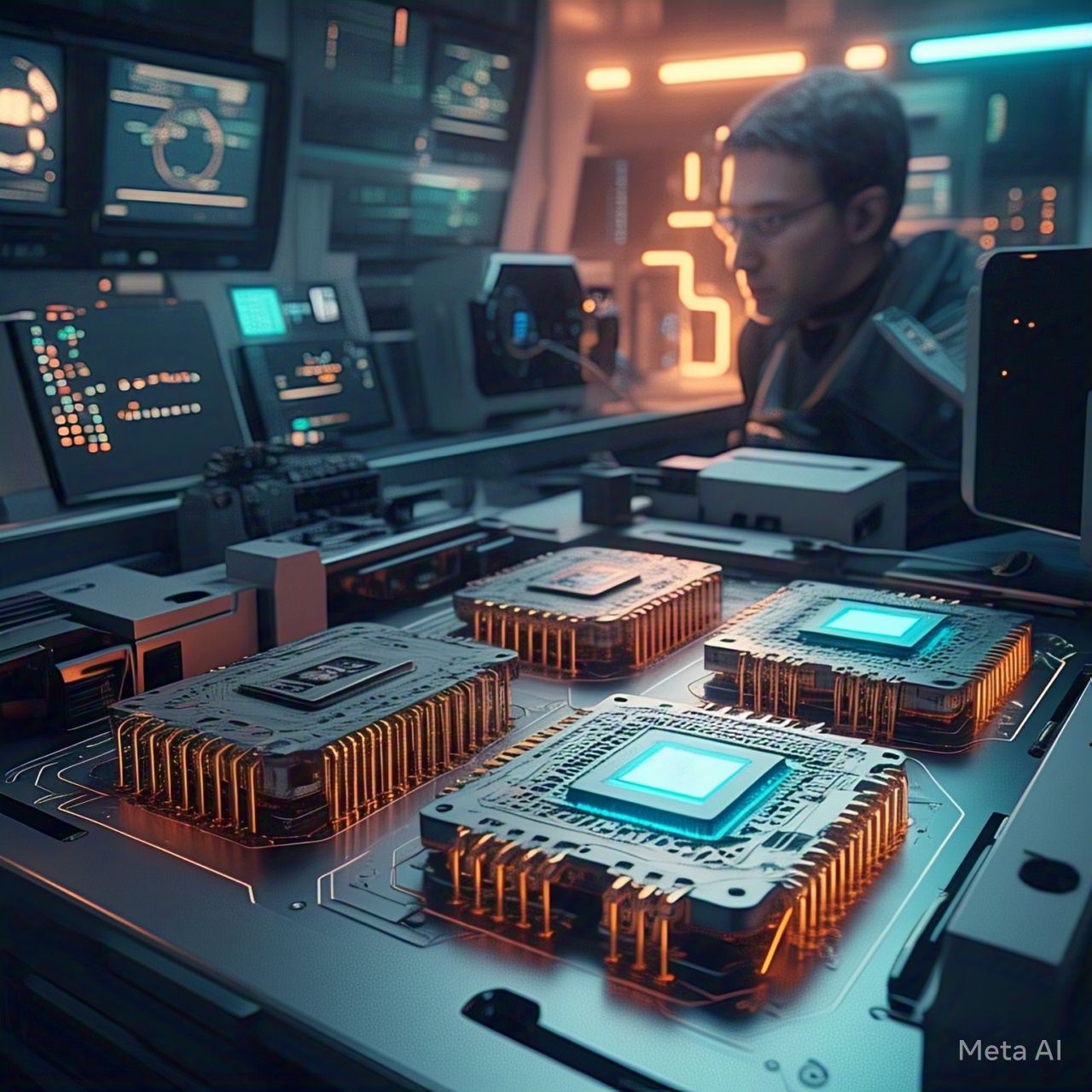Table of Contents
- Introduction
- Understanding Superconducting Chips
- The Role of Neuromorphic Chips in AI
- Synergy Between Superconducting and Neuromorphic Chips
- Advantages of This Hybrid Approach
- Challenges and Potential Solutions
- Real-World Applications
- Future Prospects
- FAQs
- Conclusion
1. Introduction
Artificial Intelligence (AI) is pushing the boundaries of computation, demanding faster, more efficient, and intelligent processing. Two breakthrough technologies, superconducting chips and neuromorphic chips, have emerged as potential game-changers. While superconducting chips offer unparalleled speed and energy efficiency, neuromorphic chips mimic the brain’s structure, enabling AI systems to learn and process information in a human-like manner. This article explores how combining these technologies could revolutionize AI and computing.
2. Understanding Superconducting Chips
Superconducting chips leverage the principles of quantum mechanics to perform computations at ultra-low energy consumption and unprecedented speeds. These chips operate at cryogenic temperatures, where materials exhibit zero electrical resistance. Some key features include:
- Zero Resistance: Reduces energy loss and increases efficiency.
- High-Speed Processing: Operates at THz (terahertz) frequencies, significantly faster than conventional silicon-based chips.
- Quantum Coherence: Supports quantum computing applications.
Superconducting Chip Applications
- Quantum computing (Google’s Sycamore processor, IBM’s Quantum Systems)
- Ultra-fast AI inference engines
- Energy-efficient high-performance computing
3. The Role of Neuromorphic Chips in AI
Neuromorphic chips are inspired by the human brain’s structure, replicating the way neurons and synapses process information. These chips excel at:
- Parallel Processing: Processes information akin to biological brains.
- Adaptive Learning: Uses spiking neural networks (SNNs) to adjust to real-time changes.
- Energy Efficiency: Consumes significantly less power compared to GPUs and traditional CPUs.
Neuromorphic Chip Applications
- Edge AI (on-device intelligence in smartphones, drones, and IoT devices)
- Autonomous systems (self-driving cars, robotics)
- Real-time data analysis (medical imaging, industrial automation)
4. Synergy Between Superconducting and Neuromorphic Chips
The hybrid integration of superconducting and neuromorphic chips could enable AI systems that are both fast and intelligent. Here’s how they can complement each other:
| Feature | Superconducting Chips | Neuromorphic Chips | Combined Advantage |
|---|---|---|---|
| Processing Speed | Ultra-fast (THz) | Slower but efficient | High-speed AI decision-making |
| Energy Efficiency | Near-zero power dissipation | Low power consumption | Sustainable AI solutions |
| Learning Ability | Limited adaptability | Brain-like learning | AI that is fast and adaptive |
| Scalability | Complex cryogenic requirements | Easily scalable | Hybrid AI frameworks |
5. Advantages of This Hybrid Approach
By merging superconducting and neuromorphic chip technologies, AI can achieve unprecedented performance, efficiency, and scalability. Some key benefits include:
- Lightning-Fast AI Processing: Leveraging superconductors’ ultra-fast speeds.
- Brain-Like Efficiency: Neuromorphic architectures enable real-time adaptability.
- Reduced Energy Footprint: Sustainable AI development with low-power solutions.
- Enhanced Computational Power: Supports complex deep learning models for next-gen AI applications.
6. Challenges and Potential Solutions
Despite the promise, several challenges must be addressed for practical implementation:
| Challenge | Potential Solution |
| Cryogenic Cooling required for superconductors | Research on room-temperature superconductors |
| Scalability Issues for neuromorphic chips | Hybrid chip architecture optimization |
| Integration Complexity of two distinct technologies | Development of AI-driven chip design tools |
| Cost of Manufacturing | Mass production strategies & investment in research |
7. Real-World Applications
AI-Powered Supercomputing
By integrating these chips, supercomputers could process vast datasets at unprecedented speeds with minimal energy consumption.
Advanced Robotics
Robots with neuromorphic-superconducting hybrid brains can react and adapt to environments in real-time, mimicking human intelligence.
Quantum AI Research
A hybrid approach could facilitate the development of quantum AI models that can tackle complex problems beyond the reach of classical AI.
8. Future Prospects
The future of AI hardware is heading toward hybrid computing models that integrate multiple advanced technologies. Some trends to watch:
- Development of room-temperature superconductors
- Increased investment in neuromorphic research
- Advancements in AI-driven chip design optimization
- Collaboration between tech giants and research institutions
9. FAQs
1. Why are superconducting chips considered the future of AI?
Superconducting chips operate at incredibly high speeds and consume minimal energy, making them ideal for high-performance AI computing.
2. Can neuromorphic chips replace traditional GPUs?
Neuromorphic chips are not a direct replacement but an alternative that is better suited for adaptive, brain-like AI tasks.
3. What industries could benefit the most from this hybrid chip technology?
Sectors such as healthcare, robotics, autonomous systems, and supercomputing could see major breakthroughs.
4. Are there any real-world projects developing these hybrid AI chips?
Several research institutions and companies, including IBM, Intel, and Google, are working on next-generation AI hardware integrating neuromorphic and superconducting technologies.
5. When can we expect commercial applications?
The timeline depends on overcoming technological barriers, but within the next decade, hybrid AI chips could be a reality.
10. Conclusion
The integration of superconducting and neuromorphic chips could usher in a new era of AI, blending speed, intelligence, and efficiency. This hybrid approach holds the potential to transform AI capabilities, making them faster, more energy-efficient, and closer to human-like cognition. As research continues, these technologies may become the foundation of the next wave of AI advancements, powering everything from quantum computing to autonomous robotics.
References:
- IBM Research. “The Future of Neuromorphic Computing.” [Source]
- Intel Labs. “Superconducting Circuits for AI Applications.” [Source]
- Google AI. “Advancements in AI Hardware.” [Source]




